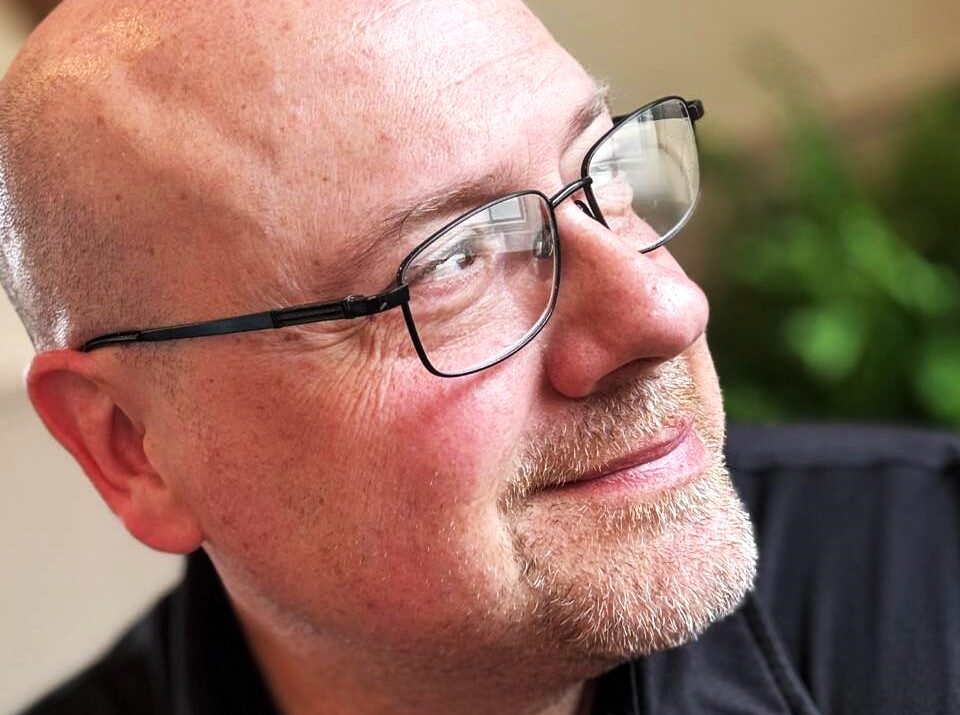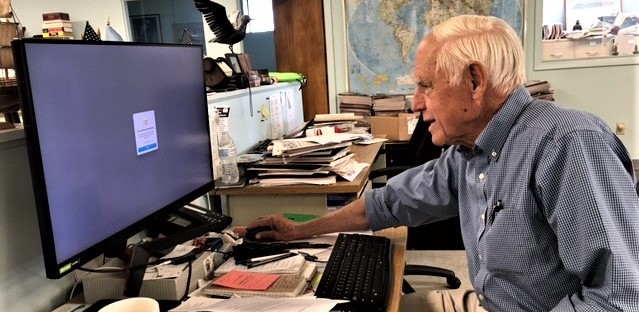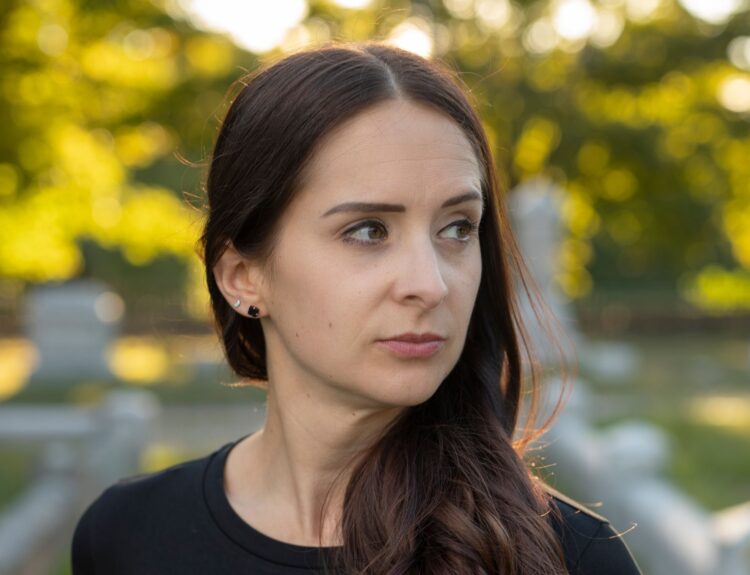
Thanks, Christian, for agreeing to do this. Your films have won many awards and we’ll get into several of them in this interview. Let’s start with Slatersville: America’s First Mill Village, a series that has won a Gold Telly, an Emmy and other awards (to go along with your more than 40 other awards). Can you give us an overview please?
Slatersville: America’s First Mill Village is an historical documentary series told across 11 episodes that has taken over a decade to produce. It retraces the 2 1/2-Century history of the first industrialized mill village in America, located in the Blackstone Valley of northern Rhode Island. Filmed across nine states and the U.K., Slatersville is educating and entertaining a wide range of audiences around the globe.
Let’s get into some detail. What inspired you to film this series and when did you begin shooting?
First, I am from Slatersville originally, and as a filmmaker, I had always wanted to do a historical documentary. I had made films in the genres of narrative drama and comedy and other forms of documentary but not a story that went this far back. As far back as 1993, at the age of 18, I found myself drawn to the abandoned and rotting mill buildings at the center of the village. (This story is best told in the seven-minute prologue that opens the first episode). At the time, I was fascinated by films with small town themes. The Last Picture Show (1971) was one of them, and it centered on a small town Texas movie theater as a point of symbolism. Later in its little known or seen sequel Texasville (1990), which takes place over 30 years later; the same movie theater is abandoned and rotting. So when it came to the mill in Slatersville, I found myself deeply curious about a structure in ruins that once represented a historically crucial and nationally significant part of America’s story, from the birth of the Industrial Revolution at the start of the 19th Century to its function as the central hub of existence for families that surrounded it. Slatersville functioned as a mill village for exactly 150 years (1806-1956), before the Kendall Company, the last to own Slatersville as a working village, closed up shop and moved its operations to South Carolina. I wanted to understand what happened, what the hidden and forgotten stories were that built it and how it could have been so neglected.
The very first shot you see in Episode 1 I took when I was 18 years old in 1993. At the time, I was filming shots with my 8 mm camera to establish the town visually for a documentary I had done in my senior class in high school. I returned in 2001 to film more, this time on the property itself. That year I was also filming shots of the town for a feature I had directed called Getting Out of Rhode Island, but I never used them in the finished film. Then at the end of 2004 and the start of 2005, I decided I wanted to make a film about the abandoned mill. I filmed four interviews and town meetings where the future of the mill being repurposed by developers was being discussed. However, I did not have a full grasp of the material, how to approach it or where to research. I was also planning a move to New York City and working on another film at the time, so I shelved it. In 2008 I moved back to Rhode Island. A year later I learned the Town Administrator wanted a short film done about Slatersville to promote it as a destination for the proposed Blackstone River Valley Historical National Park (which Congress later approved in December 2014). The town was planning to hire me for the job when the council decided it was going to cut the grant writer position in town. That’s when the Town Administrator said that if I could do my own project and fund it myself the town would work in cooperation with us. After a good deal of writing, we were finally awarded two grants to begin the process officially. So in January of 2012, I started filming again and have been at it ever since.
Over the years, what began initially as a concept for a feature length documentary became a series. The advent of streaming services producing a variety of documentary series (on just about anything), coupled with the possibilities of self-distribution and promotional opportunities that can be artist-controlled (to a degree), made a series on Slatersville doable. With the amount of content gathered over the past 13 years (interviews with over 150 participants – 31 who have died, never-before-seen historical details in a story that spanned nearly 2 1/2 centuries, etc. etc.), its 11-episode duration became justified 🙂
Why is it important to capture the history of Slatersville, a village on the Branch River in North Smithfield?
For me as a filmmaker and lover of history, I found Slatersville important to document, initially because I didn’t want the abandoned mill to be forgotten, and I wanted residents of the town to understand the buried and forgotten stories behind what made it so significant. Growing up there were generations of folks who, while they may have loved this town, had no idea of its history because they were never educated about it. As one of the women I interviewed said: “We didn’t know we were historic. We knew that we were mill workers’ kids, and that mill meant everything to us.”
When I started this process, I didn’t know 95% of what you see across the eight episodes that currently exist and the three remaining episodes being completed now. So I learned as I went along. In fact, I learned the story backwards, because I first had to interview everyone I could who was still living who had worked for the Kendall Company or had family who did in the first half of the 20th Century. I had to film them while they were still here (as established in Episode 6), then gradually over time, learn the Slater family tree going all the way back to the late 18th Century. The exploration and the undertaking of this project were immense in ways I did not fully comprehend at the outset, but I knew I had the storytelling skills to make it effective, as long as I had all the content possible to work with. That included interviews with descendants and access to rarely seen photos and films.
To be honest, I feel as if I am still – after 13 years – working at getting a grip on the enormity of this epic story and its importance. While its locations, names and details may, for the most part, be local, its themes are universal. That’s how you hook your audience. History and mystery rhyme for a reason, and I chose to approach telling the story as if I were putting a huge puzzle together and bringing the audience on that journey with me, while emotionally connecting them to the characters and conflicts that are explored in each installment.
How many episodes of the series are currently available and where can they be seen?
Episodes 1 through 8 of Slatersville are available on TUBI. Season 1 is episodes 1-5, and Season 2 has episodes 6-8. The third and final season will be episodes 9-11, and they are now in post-production. Slatersville – Season 1 ONLY is also available for purchase on Amazon Prime video and streaming on PBS.org.
And now’s a good place to learn about you. Can you please give us some of your background, starting with where you grew up?
I grew up in Slatersville, Rhode Island. My parents were both musicians and did Portuguese music together. My father passed 10 years ago, but my mother is still very much alive and does work in both music and interfaith ministry. My father was a Portuguese guitar maker and player.
Here they are performing on Rhode Island PBS in 1982. My father is the player on the left. At about the 6 1/2 minute mark, they stopped, performing and talk about the music and the making of the instruments.
North Smithfield, Rhode Island, did not have a particularly good education when it came to arts. When I was eight years old, my mother enrolled me in the creative arts summer camp at the Gordon school in East Providence and over several years that truly gave me a better sense of acceptance and opportunities to work with kids who were of a more artistic nature. It was also far more multicultural than northern Rhode Island was.
I knew I wanted to study film seriously when I was 14 years old. At that time I started to school myself using TV Guide and reading books about film, going back to the classics. I planned the recording of films on cable and actually used a Calendar to do it. So by the time I entered college, I was knowledgeable about a lot of film history in ways that most kids my age were not. I was given my first video camera when I was 16 years old and created my first documentary about my high school class, which eventually was awarded a certificate of Merit by the Chicago International Film Festival in 1996. Prior to that I studied theater at Dean College and Roger Williams University‘s London program before transitioning to the film program at Rhode Island College, where I graduated with a bachelor’s in film studies in 2000. During those college years, I started to make my own films, including Alzira’s Story, Getting Out of Rhode Island, and other others. 😊
When did you become interested in filmmaking?
Honestly, I was around seven or eight. I recall being transfixed by how TV and movies were made and by the imagery from videos on MTV. At first my parents thought it was a phase and that it distracted me from my homework and other responsibilities, but over time, my mother could see that the interest was real. So instead of trying to sway me away from pursuing it, she encouraged me to study and take it seriously. So I did, and that started in the 9th grade.
Let’s get into some more of your feature-film work. Please tell us about Getting out of Rhode Island (2003).
Getting Out of Rhode Island was a fully improvised comedy-drama filmed in one night. Celebrity Jake Mattison (Robert Merrifield) returns home after a bad stint in Hollywood. His old friend-turned-enemy Morgan Stipe (Jeremy Banks) hosts a film fundraising event disguised as a “welcome home party” in a home studio basement with fans and groupies showing up to network and pitch their own projects. Filming took place in North Smithfield with 45 actors in my home across a 2 1/2 hour period (the finished film runs 102 mins.). The making of GORI was inspired by the Dogme ’95 movement at the time, which inspired low-budget movie making with digital video cameras of the day and natural lighting conditions. It received two awards from the Black Point Film Festival in Lake Geneva, WI and a five-star review in Film Threat. When I look back at this film, I have fond memories of making it. It looks as raw as it was to make, and people either loved or hated it. It was a big lesson on a variety of fronts, but the biggest one was ultimately: “Be careful what you name something.” The title was fully intended to be symbolic when it came to the film scene in Rhode Island at the time, but I’ve read so many peoples’ reactions who stumbled upon it thinking it assuming it was about the state in a broader sense only to be very disappointed. But I’m still proud of various parts of the film.
Same for Raising Matty Christian (2014).
Winner of nine film festival awards throughout the U.S., this inspirational documentary profiles the life of Matthew G. Christian (1983-2009), known as ‘Matty’ from the town of Canton, Mass., who was born without a full set of arms and legs and without a tongue. As told through interviews with his parents Allie and Jerry, brother Michael and several close friends and authority figures throughout his life, Raising Matty Christian paints a portrait of an inspiring young man who never took no for an answer and set out to live life to the fullest.
From the first video, I was shown of Matt running on the beach without prosthetics, by my friend Paul Plotkin, who brought the project to me, I knew I was hooked and had to make it. From the time I was first told about it to the time Paul introduced me to Matty’s parents, a year and a half had gone by.
Personally, I’m glad I had the experience of making 41 (2007) about the life of Nick O’Neill, the youngest victim of the station nightclub fire, because that was a grueling and emotional experience.
With RMC, 41, Zach: a Film about Epilepsy, and Fueling Fierce: The Shannon Heil Story, I have done four documentaries about the loss of children. I wouldn’t wish it on my worst enemy, but the experience of making 41 prepared me for taking on RMC, because you become emotionally hooked and drawn into the pain of it all. With 41 I was having crying fits in my Brooklyn apartment cutting it. RMC had its moments too, but not nearly as bad. Everyone is different. In my case, there is a deeply empathic journey I take that as unavoidable. When you create a story in documentary, you become woven into the fabric of that story as you become a vessel through which it is told creatively. Because I was much more experienced by this point, RMC did much better than 41, garnering 10 film festival awards, which exceeded my expectations.
Tell us more about Zach: A Film About Epilepsy and Fred and Emile, which aired on WGBH in Boston.
In 2009 I was hired by Lee Ann Brigido, who was doing a fundraiser for C.U.R.E. (Citizens United for Research in Epilepsy) to make a short film about her son Zachary Smith, who had an extreme form of the disease. I filmed in Lincoln, R.I., and at Lincoln High School, and Grant Wilson of Ghost Hunters fame donated his music for the short. C.U.R.E. was founded in Chicago by David and Susan Axelrod, who had worked with Barack Obama, and they used the film to generate funds online. Since that time, Zach has received over 700,000 views. Sadly, after years of Zach living with this condition, he passed away in December of 2023 at the age of 33.
What about Memories for Sale?
In 2010, at a screening event, I was introduced to Jerry Bisantz, a playwright and producer at the Image Theater in Lowell, Mass. Jerry had a one-act play he wanted to produce as a film called Memories for Sale (2013). I read it, loved it and wanted to film it, so we made it happen. There were four actors involved, including Jerry and Bob Colonna, formerly of Trinity Rep Theater in Providence and known for TRIST, the Rhode Island Shakespeare Company. Bob gave a phenomenal performance of an elderly Jewish comedian named Sid, whose story was being written into a biography.
And Fred and Emile?
Jerry had the idea to make a documentary short film about LGBTQ charcaters and the result was Fred and Emile, about aging gay men and the struggles they have faced in their own lives. Out of that came Fred and Emile (2015), which aired on WGBH in 2022. These two men were one of the first couples of be married in Lowell following the law that approved of gay marriage in the state. Sadly, Fred Riley passed in 2021.
REVEALED: Portraits From Beneath One’s Surface and Cat Scratch are also two very different shorts that I’m proud of.






